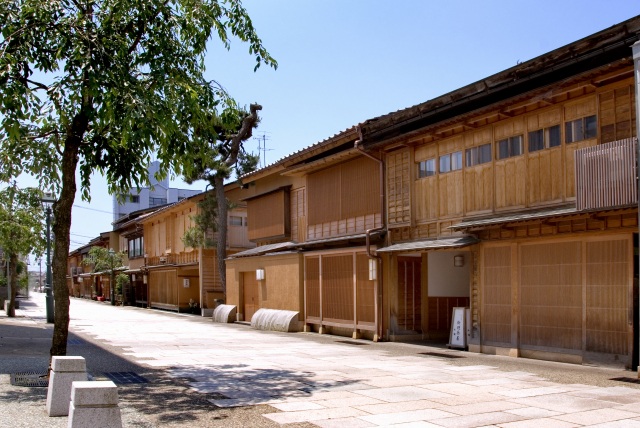The Legacy of the Samurai
Over several centuries the samurai and their lords were shaping the Kanazawa City culture through art, crafts and architecture.
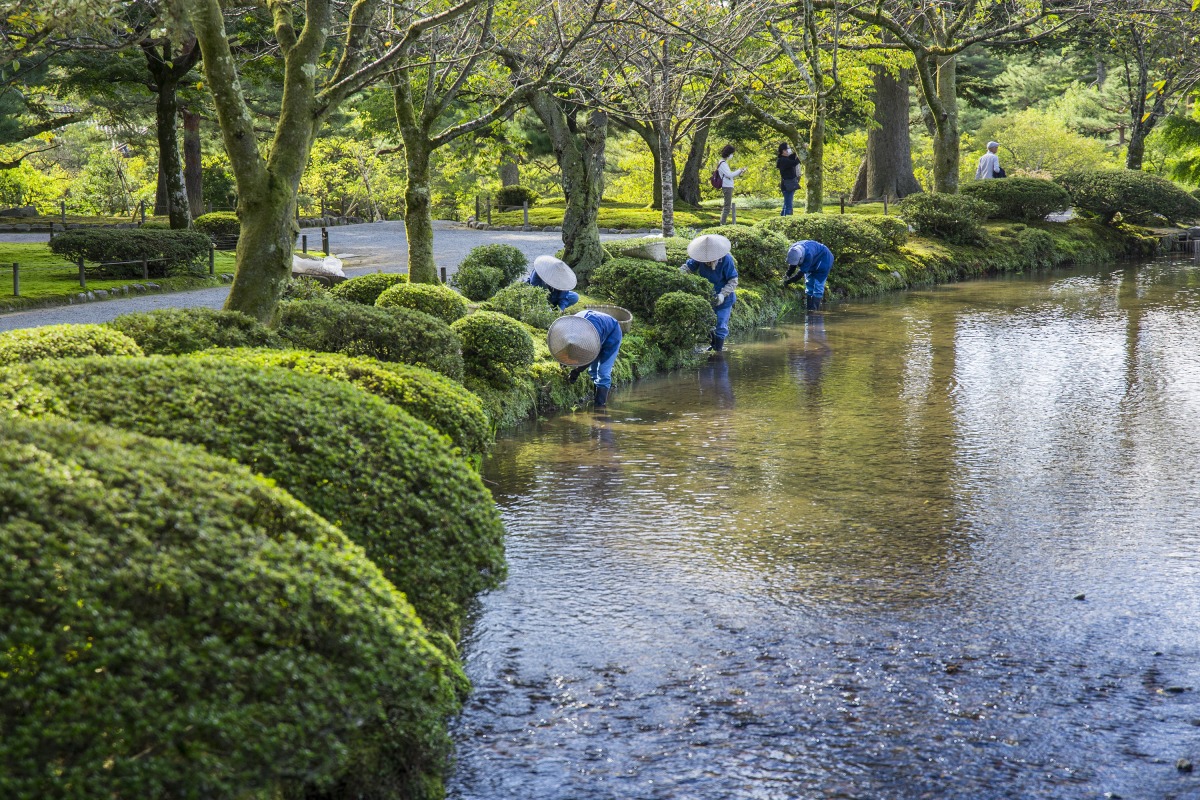
Kenrokuen Garden
A Beautiful and Famous Garden in the Heart of Kanazawa
Considered one of Japan’s three most beautiful gardens, Kenrokuen Garden is a must-visit location in Kanazawa. The name Kenrokuen means “having six factors”, representing the attributes which bring out the garden’s stunning beauty: spaciousness, tranquility, artifice, antiquity, water sources and magnificent views.The garden has an area of 11.4 hectares and is located on the heights of the central part of Kanazawa next to Kanazawa Castle. The Maeda family, who ruled the Kaga Domain (the present Ishikawa and Toyama areas) in feudal times, maintained the garden from generation to generation. It is regarded as one of the most beautiful feudal lords' gardens in Japan.
One of Kenrokuen Garden’s most stunning attractions is its large artificial pond called Kasumigaike. Located near the center of the pond is Horai Island. The pond is often seen to symbolize the sea and Horai Island a sacred island out at sea, on which an ageless hermit with miraculous power was believed to live. As a result, the pond and the island were constructed to symbolize long life and eternal prosperity for the lord.
There are many other gorgeous features to enjoy in the garden, including the flowers and trees that grow there, such as plum and cherry blossoms in spring, azaleas and irises early in summer, and colorful red and yellow leaves in autumn.
In Winter, visitors can enjoy the snow-covered landscapes with yukitsuri (which means “snow hanging”). yukitsuri is a traditional technique for protecting the branches of the pine trees in the garden from heavy snow; trees are given support by bamboo poles and rope arranged a captivating conical layout.
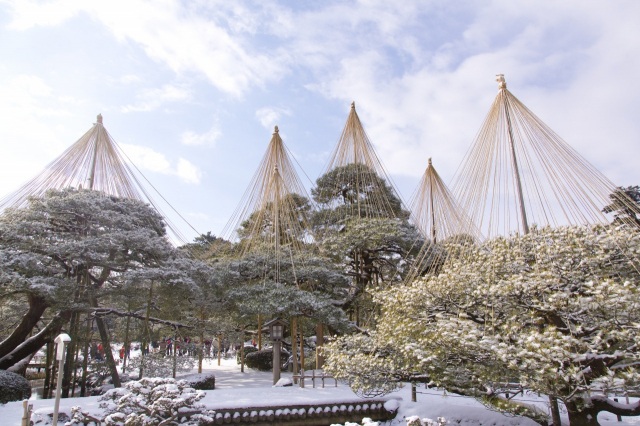
Seisonkaku Villa
An exquisite mansion gifted to the lord's mother
Seisonkaku is a villa that the 13th lord of the Maeda family built for his mother in Kenrokuen Garden in 1863. Fine techniques in a wide variety are used for the inner pillars and walls of Seisonkaku. These techniques include a wooden panel with openwork carvings of flowers and birds and a coffered ceiling for the guest chamber called "Ekken-no-ma." From these, visitors will know the status of the then Maeda family.
Furthermore, Seisonkaku exhibits articles with a long and distinguished history, such as dolls for the Japanese Girls' Festival and furniture.
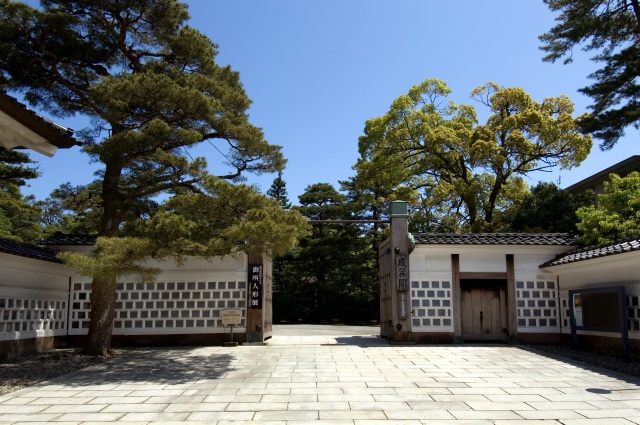
National Crafts Museum
Digging Deeper into Kogei
The National Crafts Museum is the only national museum specializing in crafts and the first national museum located on the Sea of Japan side of the country, but there is little wonder how it came to Kanazawa. Kanazawa has a long history of supporting the arts dating back to the ruling Maeda family’s patronage of the arts and culture starting over 400 years ago. Since then, the city has thrived as a center for Kogei, or traditional Japanese Crafts. Kanazawa is known as the “City of Crafts.” In fact, in 2009, UNESCO designated Kanazawa as a city of Crafts and Folk Art in its Creative Cities Network which eventually led to the relocation of the museum from Tokyo in 2020.
Housed in two historic Meiji-era (1868-1912) buildings formerly used by the military and restored with their original exteriors, the National Crafts Museum holds more than 4,000 craft and graphic design artworks primarily originating from the 20th century and is home to the finest examples of Japanese traditional crafts in the nation, including many pieces created by Japan’s Living National Treasures, the designation for master craftsmen of a specific traditional art or craft. The National Crafts Museum is located near Kenrokuen Garden, in an area that is home to several of Kanazawa’s museums.
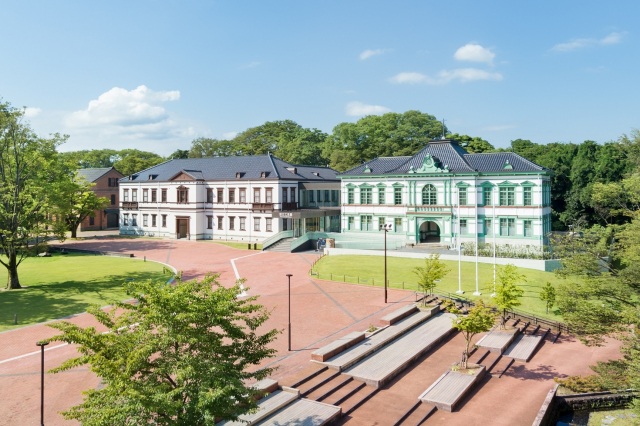
Kanazawa Nakamura Memorial Museum
The Nakamura family, who has been running a sake brewery in Kanazawa, moved and modified their own residence here, exhibited and opened their collection to public. Later, the museum was donated to Kanazawa City. Centering on noted articles of Japanese tea ceremony arts, the museum exhibits calligraphic works, paintings, lacquer ware, and pottery. There are a number of two or more Japanese tearooms used for tea ceremonies.
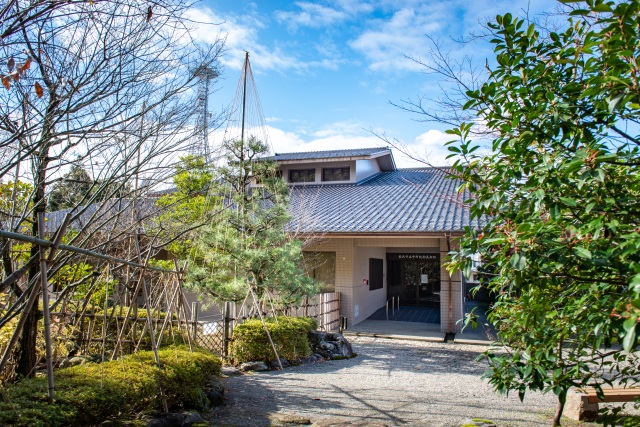
D.T. Suzuki Museum
Learn about the life and teachings of Kanazawa’s most famed philosopher
Known around the world, Daisetz Suzuki – also known as D.T. Suzuki – is one of Japan’s most famous Buddhist philosophers. His essays and teaching were incredibly influential in spreading Buddhist philosophy to the West.
Born in Kanazawa, the philosopher is commemorated in city through the D.T. Suzuki Museum. The museum is located in the area of the city where D.T. Suzuki was born and comprises three wings – the Entrance Wing, the Exhibition Space Wing and the Contemplative Space Wing – as well as three gardens – the Vestibule Garden, the Water Mirror Garden and the Roji Garden.
In addition to containing many exhibits relating to the life of D.T. Suzuki, the museum also serves as a place of reflection for visitors as they contemplate his teachings.
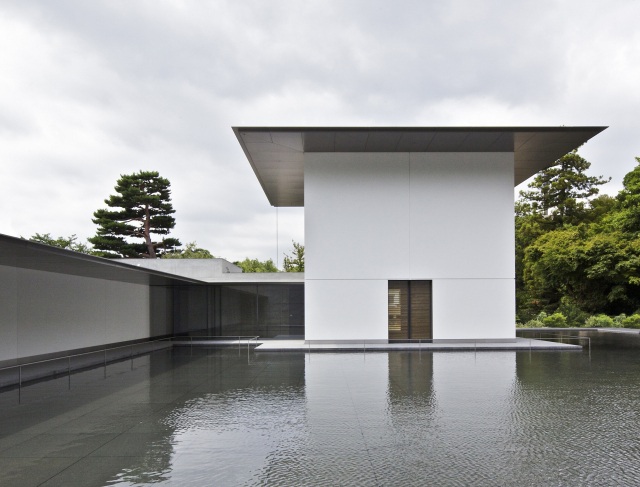
Tera-machi Temple Area
One of the Three Temple Districts of Kanazawa
The Maeda family, who ruled the Kaga Domain (the present Ishikawa and Toyama areas) in feudal times, gathered temples in three areas when the family built the castle town. Approximately 70 temples are located close together in the Tera-machi Temple Area.
Comparatively big temples are located in line along the main street, and the view of the black roof tiles and mud walls of the temples and the big trees in the precincts is a scene suitable to the name of Tera-machi (literary means "temple town"). The back street is dotted with small temples, where you can enjoy a quiet walk.
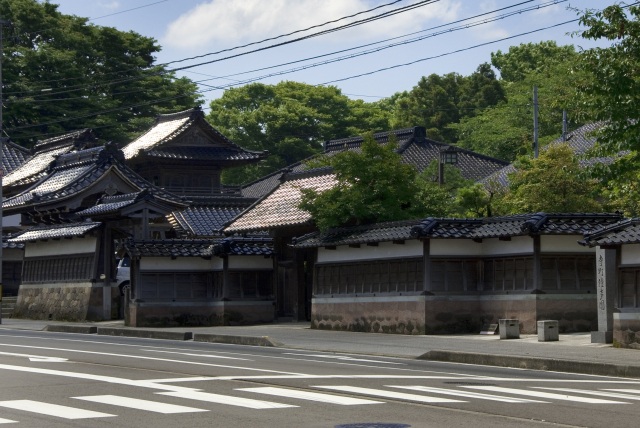
Myoryuji Temple (Ninjadera Temple)
You will be amazed at the pitfalls, hidden stairs, and other tricks! Ninja Temple
Myoryuji Temple was built as a prayer place of the Kaga Domain soon after Lord MAEDA Toshiie, founder of the Kaga Domain, moved to Kanazawa Castle. Later, in preparation for an emergency attack of the central government (Tokugawa Shogunate), the Maeda clan considered the temples in Teramachi(temple districts) as a shield. Then the family added a number of functions to Myoryuji Temple so that it would work as a lookout post and fort.
To countermeasure the invasion of enemies, Myoryuji Temple is provided with a variety of mechanisms. That is why this temple is also called Ninja Temple. Advance reservations by phone are required (English-speaking staff available).
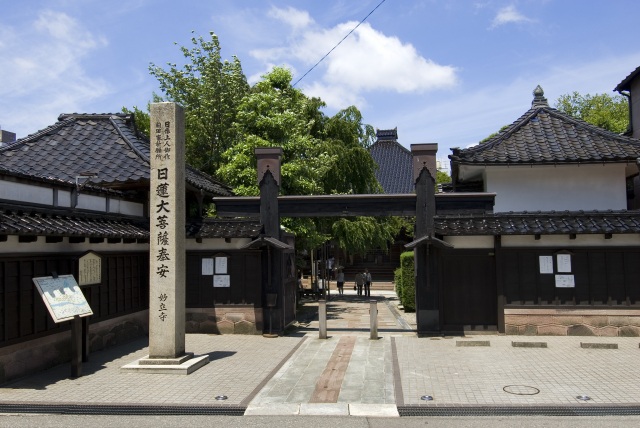
Nishi Chaya District
One of the Three Chaya Districts of Kanazawa
The Nishi Chaya District is one of the three geisha (traditional female Japanese entertainers) districts of Kanazawa, and located 500 m away from the Saigawa Ohashi Bridge in the central part of the city. Chaya is a traditional place of feasts and entertainment. You can find a number of two-story wooden chaya houses along the main street. At the time of twilight, you may hear the sound of the shamisen (a three-stringed musical instrument) and strongly feel the atmosphere of the Kanazawa-like chaya machi.
The Kanazawa Nishi Chaya Shiryokan Museum is a building reproducing a chaya house, where you can see the guest room of the chaya house.
